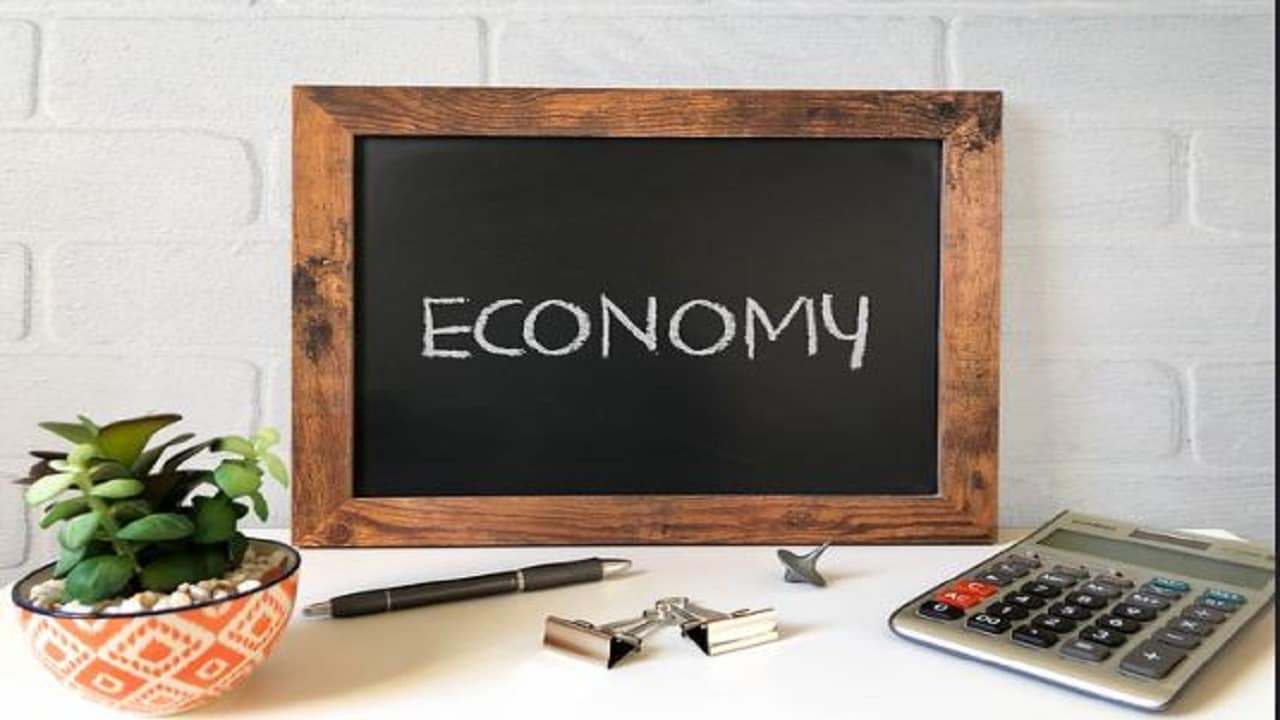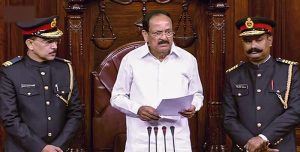Startup Digest: Anicut Capital secures Rs 140 crore for 2nd debt fund, UpScalio acquires Truphe & EaseMyTrip reports 84% jump in profits in Q3

KV Prasad Jun 13, 2022, 06:35 AM IST (Published)
 Listen to the Article (6 Minutes)
Listen to the Article (6 Minutes)
Summary
Here are the top headlines from the startup space.
FUNDING NEWS
Anicut Capital secures Rs 140 crore from SIDBI for second debt fund
Anicut Capital has raised Rs 140 crore from the Small Industries Development Bank of India (SIDBI) for its second debt fund. The funds will be deployed through the second debt fund – Grand Anicut Fund-2 – which closed recently at Rs 875 crore, a statement said. The funds received from SIDBI is through the Fund of Funds for Startups (FFS) that was launched under the Startup India Initiative in January 2015, it added.
Anicut’s second debt fund has invested across over 15 growth and early-stage startups with an average deal size of Rs 15-100 crore. GAF-2 has already invested upwards of Rs 580 crore, and portfolio companies include startups like Wow Momos, ASG Eye Care Hospital, Akna Medical (acquired by Pharmeasy), B9 Beverages (Bira), Azure Hospitality, Kissflow and Wingreens.
The fund plans to invest in more than 30 early and growth-stage companies across sectors, such as consumer brands, technology, F&B, fintech, among others, under categories of acquisition financing, promoter/buyback financing, growth capital and capital restructuring, the firm added.
100ms in talks to raise over $15 million from Falcon, Matrix & Accel: Report
Live video infrastructure startup 100ms is in talks to raise around $15-18 million in a fresh fundraise from new and existing investors, according to Entrackr. “100ms is finalising a $15-18 million round in which Falcon Edge’s Alpha Wave, Matrix and Accel will be the lead investors,” sources told Entrackr.
The round may also see participation from a couple of new investors and some angels, the report added. The startup had previously raised a $4.5 million seed fund led by Accel with participation from Strive.vc.
MemeChat raises over $1 million from Beenext, launches NFT marketplace
Homegrown social media networking app MemeChat secures over $1 million in its second round of funding led by Singapore-based venture capital firm Beenext, Stanford Angels & Entrepreneurs, 9unicorns, Founders Room Capital, Gaurav Munjal, Roman Saini and Abhishek Goyal, also participated in the funding round.
Also Read: Changing risk profiles of e-commerce and startups in post COVID-19 world
MemeChat will continue to strengthen the userbase for its newly launched The Meme Club – An NFT Marketplace (TMC), develop its networking app by building tools to easily discover & share memes and build a stronger recall value, the company said in a statement. With the newly launch NFT Marketplace, creators can also mint their memes and earn.
Currently, the startup has over 5 million downloads and 20 million memes generated on the application. It has partnered with the top OTT platforms like ALT Balaji, Hotstar, and Amazon Prime.
Antler India invests undisclosed sum in Gold loan aggregator Bold Finance
Gold loan aggregator Bold Finance raised an undisclosed pre-seed round from Antler India. The firm partners with local jewellery stores and banks to provide gold loans. It aims to cater to mid to low-income customers seeking gold loans.
With its first product, Bold Loan, Bold Finance aims to revolutionize the $85 billion unorganized gold loan market, by leveraging existing jeweller networks to source and dispense gold loans, it said in a statement.
“The majority of low and mid-income segment groups still do not have access to good customer experience in financial services, because of low ticket size and neglect from banks. Currently, 65 percent of the $135 billion gold loan market is unorganized and is managed by pawnbrokers, money lenders & jewellers. In the unorganized market, customers are often exploited with high-interest rates, usually upwards of 30 percent, and lenders bypass all regulations. This is the key challenge we are undertaking – to enable financial freedom for Bharat, starting with gold loans,” said Nikhil Jain, co-founder at Bold Finance.
The firm plans to scale its presence to Maharashtra, Gujarat and Madhya Pradesh this year. The startup will utilise the pre-seed funds towards onboarding channel partners, offline branding, and operations, it added.
INDIA STARTUP NEWS
UpScalio acquires Truphe; aims to hit Rs 750 crore revenue by FY21 end
Roll-up e-commerce startup UpScalio has acquired home and gardening brand Truphe for an undisclosed sum. Truphe is a manufacturer and distributor of gardening tools, seeds, planters and other accessories. It is available on marketplaces such as Amazon and Flipkart.
UpScalio said it aims to grow Truphe to a Rs 50 crore annual recurring revenue (ARR) brand in the next 1-2 years. It will work on the company’s inventory regionalization, sourcing, and brand marketing to scale the brand, the firm added. “The home and gardening category in India has quickly grown to become a $900 million space, and we plan to capture a large chunk of it with Truphe,” said Saaim Khan, co-founder and COO, UpScalio.
This is UpScalio’s ninth investment since its inception in June 2021. The roll-up e-commerce company has recorded over Rs 210 crore in annualised revenue. The company plans to acquire five more brands by the end of FY21 and is projecting a consolidated revenue run rate of Rs 750 crore for the same period.
Airtel picks up 25% stake in Lavelle Networks
Telecom operator Bharti Airtel has announced an agreement to acquire about 25 percent equity stake in technology startup Lavelle Networks. The agreement is subject to statutory approvals. “Airtel acquires about 25 percent strategic stake in SD-WAN startup Lavelle Networks”, the company said in a statement. Financial details about the deal were not disclosed.
Also Read: Indian electronics and lifestyle startup files papers for Rs 2,000 crore IPO
Lavelle Networks specialises in software-defined Wide Area Network solutions and it serves a range of industry segments. Airtel Business’ Network as a Service (NaaS) is a digital platform that focuses on emerging connectivity requirements of enterprises as they go through the cloud and digital adoption.
Under the NaaS portfolio, Airtel will offer software-defined connectivity solution from Lavelle Networks and co-create a series of innovations as part of its platform. “This also aims to bring ‘Made in India’ products and solutions for enterprises by offering cutting edge technology and cost efficiencies,” Airtel said.
EaseMyTrip reports 84% jump in profits in Q3
Online travel platform Easemy Trip has reported an 83.8 percent jump in consolidated profit after tax to Rs 40.42 crore in the third quarter ended on December 31, 2021. The company had posted a profit after tax of Rs 22 crore in the same period last fiscal, the company said in a statement.
Gross bookings revenue (GBR) in the period under review stood at Rs 1,293 crore as compared to Rs 783 crore in the year-ago quarter, up by 65 per cent, it added. Air segment booking grew 49 percent and hotel nights booking grew by 144 percent during the quarter.
Commenting on the performance, Easemy Trip co-founder Prashant Pitti said despite the challenges posed by the second and third wave of the pandemic, the company continued to deliver robust growth in one of the most disruptive periods for the travel and tourism industry.
On the outlook, Pitti said, “We are now extremely bullish about the strong pent-up demand in the travel industry.” He further said, “We will continue to strengthen on all fronts and are confident that our continued focus on financial and operational efficiency will help us to achieve sustainable business growth in the coming quarters as well.
PhonePe drives cumulative 6.63 bn transactions in Q4 2021, Maharashtra crosses 1 bn transactions: Pulse Q4 2021 Report
Digital payments and financial services platform PhonePe drove a cumulative 6.63 billion transactions in the fourth quarter of the calendar year 2021, a 26 percent quarter-on-quarter (QoQ) jump, it said in its Pulse Q4 2021 Report.
In addition, the total payments value (TPV) of transactions processed on the application grew to $155 billion.
Money transfers with UPI reached 2.72 billion while merchant payments registered a 37 per cent QoQ growth hitting 3.15 billion transactions during the quarter, according to the report. Maharashtra became the first state to cross 1 billion transactions in a quarter, with Pune accounting for 38 percent of overall transactions from the state. At a close second, Karnataka showed 24 percent QoQ growth, driving 932 million transactions.
In addition, Goa with an increase of 71 percent, Andaman with 41 percent, and Assam with 37 percent were the top three states and union territories in terms of QoQ transaction growth. Interestingly, 37 percent of all transactions after six in the evening, on the PhonePe application, were reported from food and beverage stores, the report highlighted.
Also Read: From LIC to Delhivery, Ola, Pharmeasy, a look at upcoming IPOs in 2022
The online merchant transactions category saw 32 percent QoQ growth hitting 655 million transactions. 25 million merchants were digitised across 15,700 towns and villages in India during the quarter, it said.
India has over 61,000 recognised startups, Delhi takes over as startup capital: Economic Survey
India is home to more than 61,400 startups recognised by The Department for Promotion of Industry and Internal Trade (DPIIT), as per the Economic Survey. The services sector has the maximum number of startups in the country. In 2021, DPIIT recognized over 14,000 new startups in comparison to 733 new startups recognised in 2016-17.
Delhi-NCR is now officially the startup capital of India as per the Economic Survey for 2022. The national capital region replaced India’s Silicon Valley Bengaluru as home to the most number of new startups getting created in the country. The government recognized over 5,000 new startups in Delhi-NCR compared to 4,514 startups in Bengaluru between April 2019 and December 2021.
In fact, some of the recently listed startups like Zomato, Policybazaar and Paytm are all headquartered in Delhi-NCR. The top two startup cities house some of the most valued startups in the country like Byjus, Swiggy, Oyo, Ola, PhonePe, Delhivery, OfBusiness, Razorpay and Cars24 among others.
At 11,308, Maharashtra has the highest number of recognised startups in the country. In terms of distribution, the survey said, 555 districts had at least one new startup in 2021 when compared to 121 districts with at least one new startup in 2016-17.
India’s startup ecosystem has been cruising on top gear with investors betting big on the India story, pandemic led the shift to digital and the opportunity in the ‘Bharat’ market. Indian startups raised a record 35+ billion dollars in venture capital in the last year as per data from Venture Intelligence. 2021 has also been a historic year for the Indian startup ecosystem with a record 44 startups hitting billion-dollar valuations entering the coveted ‘Unicorn Club’.
India has now overtaken the UK to become the third country with the most number of unicorns after the US and China. The US added 487 unicorns in 2021 while China saw the creation of 301 billion dollar firms in the year. India’s 83 unicorns are valued at $277.77 billion as per the survey, interestingly more than half of them were created in 2021. The trend seems to continue into 2022, January has seen four new startups enter the billion-dollar club which translates to one unicorn a week in the first month of the year.
Celcius inks pact with Shriram Transport Finance to fund transport entrepreneurs
SaaS-based cold chain aggregator platform Celcius has announced a financial tie-up with Shriram Transport Finance Company (STFC) to fund vehicles and working capital financing for the cold supply chain market. Under the collaboration, which marks STFC’s entry into the cold supply chain segment, the two partners will provide light and heavy commercial vehicles to the cold chain industry.
Besides, the platform also announced the launch of the Vahan Vikas Samriddhi programme, which will financially support aspiring regional entrepreneurs in the transportation sector. The programme will address the supply gap and empower aspiring entrepreneurs to establish operations in the cold chain sector to transport items such as COVID-19 vaccines, perishable fruits, vegetables, meat, dairy and other pharmaceutical products across the country, including remote locations, Celcius said in a statement.
“Our tie-up with Celcius will help us collaboratively improve the cold chain logistics sector. Efficiency is at the core of everything we do, and this joint effort will aid us with streamlining vehicle financing, fuel financing and bill discounting solution,” Sriram Transport Finance Corporation said.
The startup had early last year received seed round funding from Mumbai Angels Network, along with Huddle, Lumis Partners, Eaglewings Ventures Alliance Network (EVAN), Venture Capital & Private Equity firms MaGEHold, Keiretsu Forum, besides other investors from Malaysia, Nigeria and the US.
DRiefcase approved by the NHA for Ayushman Bharat Digital Mission roll-out
DRiefcase, a Ayushman Bharat Digital Mission ((ABDM) integrated health locker, has announced that it has now become a Personal Health Records app to be approved by the National Health Authority (NHA) for ABDM roll-out.
DRiefcase will now enable users to share health information under the ABDM framework with doctors and healthcare service providers, it said in a statement.
This integration will now allow users to create their own Ayushman Bharat Health Account (or ABHA address) and ensure that the created medical records are issued to the correct individual or accessed by a health information user only after proper consent is granted. Users will also be able to link existing records in their health locker into ABDM, the firm added.
10 startups win India Sweden Healthcare Innovation Centre Challenge
India-Sweden Healthcare Innovation Centre (ISHIC), a collaboration between the Swedish Trade Commissioner’s Office, AIIMS Delhi and AIIMS Jodhpur, announced the winners of the second edition of the Innovation Challenge.
The innovation challenge included a rigorous evaluation process by a panel of experts from AIIMS Jodhpur, Business Sweden, NASSCOM, AstraZeneca and other partners. The committee had shortlisted 10 solutions including that of Acorai, AiNDRA, BrainSightAI, EzeRx, Genitico, Neurofy, relink (Tada Medical), TeraLumen and innovative ideas from Dr Pradeep Bhatia and Dr Naveen Dutt, a statement said.
The winning start-ups will now work with the India-Sweden Healthcare Innovation Centre platform for a sustainable and faster scale-up, by providing them access to cross-country mentorship, guidance on funding, and ability to ideate with a like-minded innovator, access to state-of-the-art incubation centre located within AIIMS Jodhpur campus, their lab facilities and beyond. Onboarded startups can also avail the incubation facility at NASSCOM, it added.
As a part of the initiative, the startups, as well as the partner organisations, will work towards the shared vision of propelling and integrating innovative healthcare solutions into the ecosystem to bring about progress in the way healthcare is delivered or managed currently. The innovation challenge focused on identifying the best solutions across key focus areas including diabetes, heart failure, kidney diseases, oncology, neurology and Covid, amongst others.
GLOBAL TECHNOLOGY & STARTUP NEWS
Facebook owner Meta to lift veil off its metaverse business
Meta plans to break out the results of its augmented and virtual-reality hardware unit, Reality Labs, for the first time, an investment the company previously warned would cause a $10 billion hit to 2021 profit and would not be profitable “any time in the near future.”
As per Reuters, the company is hiring engineers and buying up multiple virtual reality gaming studios to build toward the metaverse, which is a broad futuristic idea of shared virtual realms that can be accessed via different devices and which Zuckerberg is betting will be the successor to the mobile internet.
Meta has said it expects non-advertising revenue to be down year-over-year in the fourth quarter as it compares unfavorably with the “strong launch” of its VR Quest 2 headsets during the previous year’s holiday shopping season.
The company has not released sales numbers for Quest headsets, but a July recall notice for the Quest 2’s facial foam liners said it affected about 4 million units in the United States.
Front-of-mind for investors, though, will be how Meta’s core digital advertising business is faring, after the tech giant said in October it faced “significant uncertainty” in the fourth quarter. Meta is expected to report revenue of $33.38 billion, according to Wall Street estimates, up 18.9 percent year over year, and is expected to post quarterly earnings per share of $3.84, a slight decline. The company has said it expects total 2021 expenses to come in at $70 billion-$71 billion and full-year 2022 expenses to reach $91 billion-$97 billion.
Joe Rogan apologises, Spotify to add advisory to COVID podcasts
Popular US podcaster Joe Rogan has apologised amid a backlash against COVID-19 misinformation in his programme, while his platform, Spotify Technology, said it would add a “content advisory” to any episode with a discussion of COVID, Reuters reported.
Rogan, a prominent vaccine skeptic, has stirred controversy with his views on the pandemic and on vaccines and government mandates to control the spread of the virus. Singer-songwriters Neil Young and Joni Mitchell announced last week that they were removing their music from Spotify in protest at coronavirus misinformation broadcast on the platform.
Young objected to his music being played on the same platform as the top-rated podcast, “The Joe Rogan Experience.” And 270 scientists and medical professionals wrote urging Spotify to prevent Rogan from spreading falsehoods. In a 10-minute Instagram video post on Sunday evening, Rogan apologized to Spotify for the backlash but defended inviting contentious guests.
“If I pissed you off, I’m sorry,” Rogan said. “I will do my best to try to balance out these more controversial viewpoints with other people’s perspectives so we can maybe find a better point of view.” Separately, Spotify chief executive Daniel Ek posted a blog saying an advisory will direct listeners to a COVID-19 hub that contains information from medical and health experts, as well as links to authoritative sources.
Britain’s Prince Harry and his wife Meghan have also expressed their concern to Spotify about COVID-19 misinformation but will continue to work with the company, a spokesperson for their Archewell foundation said. Spotify is also publishing platform rules for its creators.
“It is important to me that we don’t take on the position of being content censor while also making sure that there are rules in place and consequences for those who violate them,” Ek wrote.
SoftBank, Riverwood lead $93 million investment in Brazilian HR startup Gupy
Brazilian digital human resources startup Gupy has raised $93.15 million in a funding round led by Japan’s SoftBank and US venture capital firm Riverwood.
Founded in 2015, Gupy uses artificial intelligence to select, hire and train employees. According to the startup, it has around 1,500 client companies in Latin America.
The funding round comes after an expansion of automated human resources services in Brazil, especially during pandemic-related lockdowns. Mariana Dias, Gupy’s CEO and co-founder, said automated services are able to reduce the time spent on hiring employees by about 70 percent.
“Now, with the new round, we can increase investments in technology and offering solutions for workers looking for jobs through the recruitment platform,” Dias told Reuters, mentioning the launch of a free marketplace for job offers. Dias said that acquisitions would be one of the company’s growth drivers, with an initial public offering (IPO) not on its radar right now.
T-Mobile to terminate corporate employees who aren’t vaccinated by April: Memo
T-Mobile US will fire corporate employees who are not fully vaccinated against COVID-19 by April 2, according to an internal company memo posted on the blog The T-MO Report. The blog said T-Mobile’s new policy was announced on Friday in an email from its human resource chief to all staff. It follows a US Supreme Court ruling on January 13 that blocked President Joe Biden’s COVID-19 vaccination-or-testing mandate for large businesses.
“Employees who have not yet taken action to receive their first dose and upload proof by February 21 will be placed on unpaid leave,” the blog quoted the memo as saying. “Affected employees who do not become fully vaccinated … by April 2 will be separated from T-Mobile.” The memo addressed to “all employees (excluding international),” stated that the vaccine rules do not apply to field technicians and most in-store retail roles.
In a statement, T-Mobile said, “We are requiring office workers (with a limited exception for certain roles, locations and legally mandated accommodations and exemptions) to be fully vaccinated by April 2.” It added that “badge-controlled offices continue to be accessible only to those who are vaccinated against COVID-19.”
Crypto giant Binance restricts 281 Nigerian accounts
Binance, the world’s largest cryptocurrency exchange, has restricted the personal accounts of 281 Nigerian users, citing a need to comply with international money laundering laws, its CEO said. As per Reuters, Changpeng Zhao said in a letter to Nigerian customers that the decision to restrict some personal accounts was to ensure user safety while more than a third of the affected accounts were restricted at the request of international law enforcement.
“Currently, we have resolved 79 cases and continue to work through others. All non-law enforcement-related cases will be resolved within two weeks,” Changpeng Zhao said. Despite a central bank ban, Nigerians have continued to turn to crypto for business, to protect their savings as the naira currency loses value, and to send payments abroad because it is often hard to obtain US dollars locally.
Red-hot gaming market to breach $150 billion in deals, fundraising: Report
After kicking off 2022 with two mega acquisitions, the video gaming sector is racing to a new record of $150 billion in deals, financing and IPOs this year, according to investment banking firm Drake Star Partners. In just the first few weeks of 2022, Microsoft pitched nearly $70 billion for Activision Blizzard and Take-Two Interactive bid $11 billion for Zynga. That has helped the total value of deals this year already near 2020’s record haul of $85 billion from more than 1,159 announced or closed deals.
Last year’s figure was almost three times higher than in 2020. “We’re in the middle of a large number of deals right now and the state continues to stay very hot,” Drake Star’s Michael Metzger said. Some companies that have not made any big plays so far – including Amazon and Netflix – are expected to make new bets, Metzger said.
In Asia, Tencent, Byte Dance, Netease, South Korea’s Krafton and Japan’s Sony are on the radar. In IPOs, EPIC Games and Discord are the names to watch, according to the firm, whose clients include Codemasters and Echtra Games.

Elon Musk forms several ‘X Holdings’ companies to fund potential Twitter buyout
3 Mins Read
Thursday’s filing dispelled some doubts, though Musk still has work to do. He and his advisers will spend the coming days vetting potential investors for the equity portion of his offer, according to people familiar with the matter

KV Prasad Journo follow politics, process in Parliament and US Congress. Former Congressional APSA-Fulbright Fellow










 Listen to the Article
Listen to the Article  Daily Newsletter
Daily Newsletter













